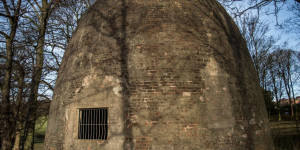Prehistoric and Romano-British activity in the Swinton area is indicated by a probable Iron Age beehive quernstone that was found to the east of Rockingham Road and a 1st- to 3rd-century AD Roman silver coin hoard that was found to the west of the town. The Roman Ridge runs to the west of Swinton and a substantial section of the earthwork remains in Long Plantation.
Early medieval activity in the area is indicated by place-name evidence, with Swinton deriving its name from the Old English ‘swin’ and ‘tun’, meaning ‘swine farm’ (Smith 1961, 115). Swinton was held by Roger de Busli, the lord of Tickhill, at the time of the 1086 Domesday survey. St. Mary Magdalene Chapel was constructed in the 12th century and remained extant until 1817.
Comparatively little is known about the history of Swinton during the medieval and early post-medieval periods. Development occurred following the opening of the Don Navigation, which connected Swinton to Rotherham and Mexborough, in 1740 and the Dearne and Dove Canal in 1798. The Don Pottery opened on a site adjacent to the canal in 1803 and remained one of the town’s major employers until 1893. The North Midland Railway opened in Swinton in 1840. Other major sites from this period include the Swinton Iron & Steel Works, the Don Chemical Works, the Swinton Glass Works and the South Yorkshire Glass Works.
Locations in the Dearne
All locations that are related to this content are as follows:



